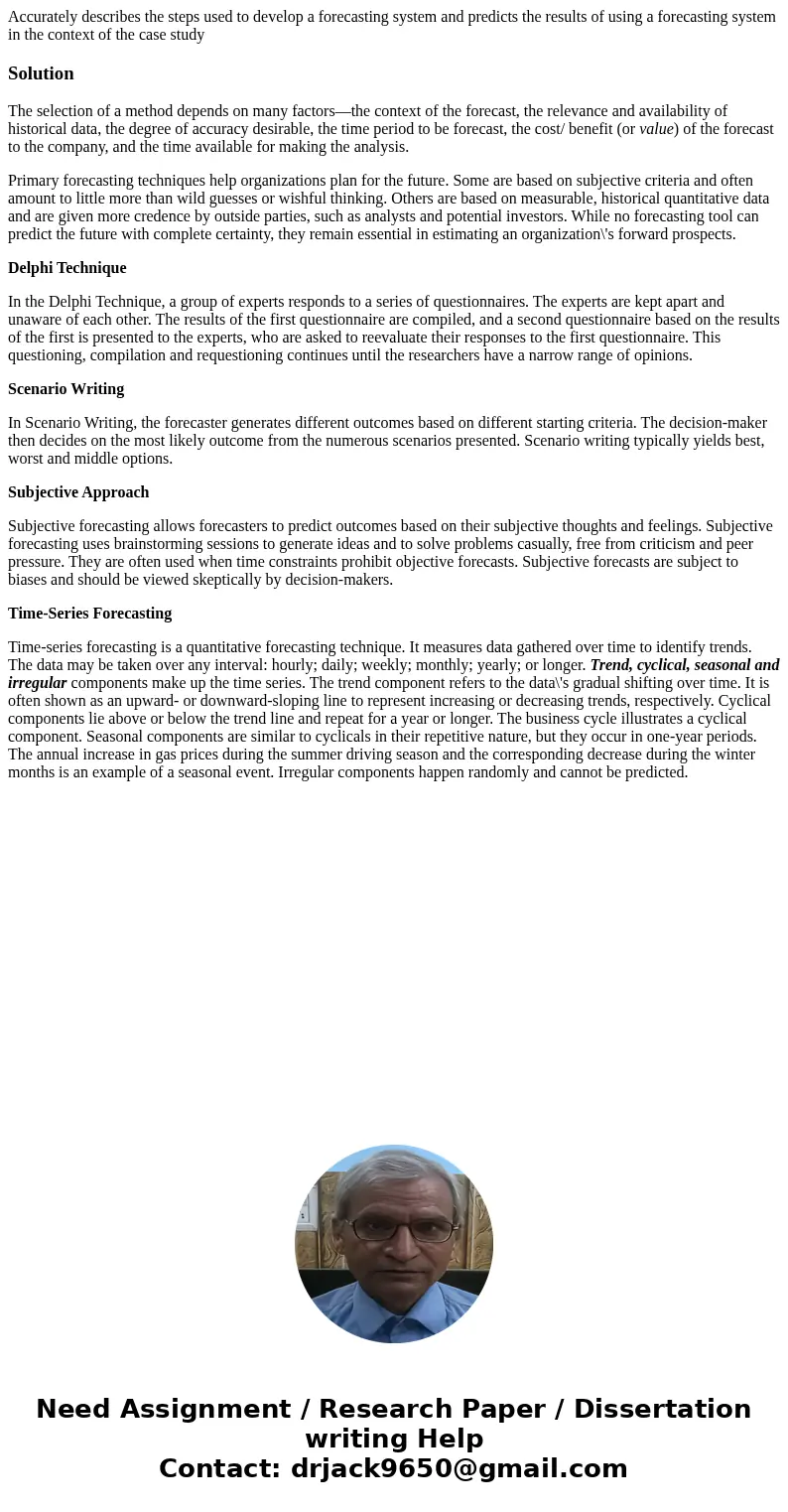Accurately describes the steps used to develop a forecasting
Solution
The selection of a method depends on many factors—the context of the forecast, the relevance and availability of historical data, the degree of accuracy desirable, the time period to be forecast, the cost/ benefit (or value) of the forecast to the company, and the time available for making the analysis.
Primary forecasting techniques help organizations plan for the future. Some are based on subjective criteria and often amount to little more than wild guesses or wishful thinking. Others are based on measurable, historical quantitative data and are given more credence by outside parties, such as analysts and potential investors. While no forecasting tool can predict the future with complete certainty, they remain essential in estimating an organization\'s forward prospects.
Delphi Technique
In the Delphi Technique, a group of experts responds to a series of questionnaires. The experts are kept apart and unaware of each other. The results of the first questionnaire are compiled, and a second questionnaire based on the results of the first is presented to the experts, who are asked to reevaluate their responses to the first questionnaire. This questioning, compilation and requestioning continues until the researchers have a narrow range of opinions.
Scenario Writing
In Scenario Writing, the forecaster generates different outcomes based on different starting criteria. The decision-maker then decides on the most likely outcome from the numerous scenarios presented. Scenario writing typically yields best, worst and middle options.
Subjective Approach
Subjective forecasting allows forecasters to predict outcomes based on their subjective thoughts and feelings. Subjective forecasting uses brainstorming sessions to generate ideas and to solve problems casually, free from criticism and peer pressure. They are often used when time constraints prohibit objective forecasts. Subjective forecasts are subject to biases and should be viewed skeptically by decision-makers.
Time-Series Forecasting
Time-series forecasting is a quantitative forecasting technique. It measures data gathered over time to identify trends. The data may be taken over any interval: hourly; daily; weekly; monthly; yearly; or longer. Trend, cyclical, seasonal and irregular components make up the time series. The trend component refers to the data\'s gradual shifting over time. It is often shown as an upward- or downward-sloping line to represent increasing or decreasing trends, respectively. Cyclical components lie above or below the trend line and repeat for a year or longer. The business cycle illustrates a cyclical component. Seasonal components are similar to cyclicals in their repetitive nature, but they occur in one-year periods. The annual increase in gas prices during the summer driving season and the corresponding decrease during the winter months is an example of a seasonal event. Irregular components happen randomly and cannot be predicted.

 Homework Sourse
Homework Sourse